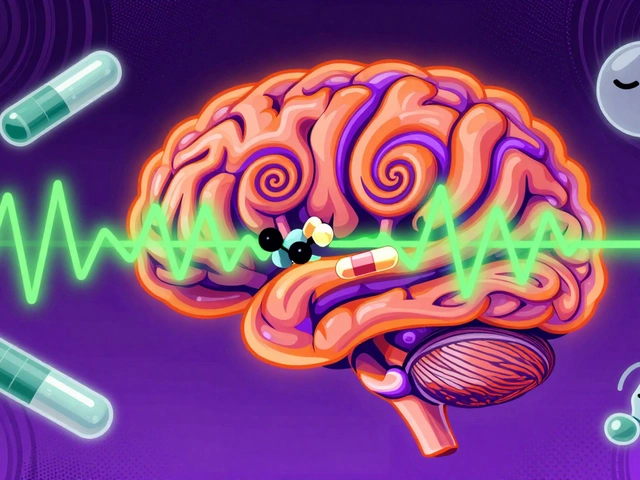Sumatriptan: Fast migraine relief and how to use it
Got a pounding headache that ruins your day? Sumatriptan is one of the most commonly prescribed drugs for acute migraine. It works quickly for many people, easing pain, nausea, and sensitivity to light or sound. This guide tells you how it works, simple dosing rules, common side effects, and smart tips so you get relief without surprises.
How sumatriptan works and forms available
Sumatriptan belongs to a class called triptans. It narrows dilated blood vessels in the brain and blocks pain signals. That’s why it helps when a migraine starts. You’ll find sumatriptan as oral tablets (25, 50, 100 mg), a nasal spray, and a subcutaneous injection. Each form reaches you at a different speed: injections act fastest, nasal spray is in the middle, and tablets take a bit longer but still work well for many attacks.
How to take sumatriptan — simple dosing rules
Take sumatriptan as soon as you feel a migraine starting. For tablets, the usual dose is 50 or 100 mg. If the headache comes back, you can take one more dose after 2 hours. Don’t take more than 200 mg in 24 hours by mouth. For the injection, a common dose is 6 mg; you may repeat once after 1 hour if needed, but don’t exceed 12 mg in 24 hours. Nasal spray dosing varies by product—follow the label and your prescriber. Always use the lowest dose that works for you.
Do not use sumatriptan if you have uncontrolled high blood pressure, coronary artery disease, a history of stroke, or certain circulatory problems. If you’re pregnant, breastfeeding, or on other meds, check with your doctor first.
Be careful if you’re taking SSRIs or SNRIs (antidepressants) — there’s a small risk of serotonin syndrome when combined. Also avoid ergotamine drugs and MAO inhibitors close to taking sumatriptan; tell your doctor about all prescriptions and over-the-counter meds.
Using triptans too often causes rebound headaches. If you take sumatriptan on 10 or more days each month, talk to your doctor about other strategies. Preventive treatments, lifestyle changes, or different meds might help reduce attack frequency.
Common side effects include tingling, flushing, dizziness, a feeling of pressure in the chest or throat, and mild nausea. These usually pass in an hour or two. If you get severe chest pain, shortness of breath, sudden weakness, or speech trouble, seek emergency care immediately.
Storage is simple: keep tablets at room temperature away from moisture, and follow instructions for nasal spray or injections. Don’t share prescription meds with others — what helps you could be dangerous for someone with heart disease or different meds.
Quick tips: take sumatriptan early in the attack, note which form works best for you, and track how often you use it. If it stops working or you need it frequently, get back to your prescriber — there are other options for prevention and treatment.
Sumatriptan and Nausea: How to Manage This Common Side Effect
In my recent blog post, I discussed the common side effect of nausea when taking Sumatriptan for migraine relief. Many people experience this discomfort, but I've found a few helpful tips to manage it. First, take the medication with food or a full glass of water to reduce stomach irritation. Second, consider using anti-nausea medication alongside Sumatriptan, but always consult with your doctor first. Lastly, practice relaxation techniques such as deep breathing to help alleviate nausea and make the treatment process more comfortable.





